Making bread at home is not just a culinary adventure; it’s an art that can transform your kitchen into a warm and inviting space. With the right bread recipes, you can create delicious loaves that are not only satisfying but also healthier than store-bought options. Utilizing soft dough tips can help you achieve that perfect texture, making your homemade bread a delightful treat. Moreover, experimenting with healthy bread types, like whole grain or sourdough, can provide numerous benefits of bread, including essential nutrients that fuel your body. Don’t forget to try out an airfryer bread recipe for a quick and easy baking experience that will leave your family craving more.
Baking bread in your own kitchen opens up a world of flavorful possibilities and wholesome ingredients. Crafting homemade loaves allows you to explore various bread-making techniques while enjoying the process of kneading and rising dough. By incorporating nutritious ingredients, you can make bread that nourishes both the body and the soul. Whether you’re a beginner or an experienced baker, there are countless options available, such as versatile recipes and tips for achieving that fluffy, soft texture. Discovering the joys of baking will not only enhance your meals but also connect you with a timeless tradition that has been cherished by many cultures.
Exploring Different Types of Bread
Bread comes in a variety of types, each with its unique flavor profile and texture. The most common types include whole wheat, rye, sourdough, and white bread. Whole wheat bread is packed with nutrients and fiber, making it a healthier choice. Rye bread, on the other hand, has a denser texture and a slightly tangy taste, often favored for its rich flavor. Sourdough bread is made through a fermentation process, which not only enhances its taste but also makes it easier to digest for many. Additionally, there are exciting options like zucchini and lentil bread that cater to those looking for alternatives to traditional recipes.
When making bread at home, it’s essential to understand that the choice of ingredients can significantly affect the bread’s quality. For example, using high-protein bread flour will yield better results than all-purpose flour in terms of texture and rise. Furthermore, exploring different recipes like the airfryer bread recipe can open up new possibilities for baking enthusiasts. This recipe allows you to create delicious bread quickly and with minimal fuss, perfect for those busy weeknights.
The Benefits of Including Bread in Your Diet
Bread, especially whole grain varieties, offers numerous health benefits. It is a great source of carbohydrates, which are essential for providing the body with energy. Whole grain bread is also rich in dietary fiber, which aids in digestion and helps maintain a healthy weight. Additionally, bread made with nuts and seeds can provide healthy fats and additional nutrients, such as omega-3 fatty acids, which are vital for heart health. The micronutrients present in bread contribute to overall well-being, making it a staple in many diets.
Moreover, the psychological benefits of bread should not be overlooked. The act of baking can be therapeutic, allowing individuals to engage in a creative process while producing something delicious and nutritious. Sharing homemade bread with family and friends can enhance social bonds, making it not just a food item but a way to connect with loved ones. So, embracing bread in moderation can be part of a balanced diet that promotes both physical health and emotional well-being.
The Harms of Excessive Bread Consumption
While bread can be a healthy part of the diet, it is important to be mindful of the quantity consumed. Overindulgence in bread, particularly white bread made from refined flour, can lead to health issues such as weight gain and increased blood sugar levels. This is due to the high glycemic index of many bread types, which can cause rapid spikes in blood sugar. For those with gluten sensitivities, consuming large amounts of gluten-containing bread can lead to uncomfortable digestive issues such as bloating and diarrhea.
Additionally, the common misconception that all bread is unhealthy can deter people from enjoying its benefits. It’s essential to focus on the quality of bread rather than just the quantity. Opting for whole grain or sourdough varieties can mitigate some of the negative effects associated with bread consumption. Understanding these harms can help individuals make more informed dietary choices, enabling them to enjoy bread in moderation while still reaping its benefits.
Key Ingredients for Homemade Bread
The foundation of any good bread recipe lies in its ingredients. A typical bread recipe consists of flour, yeast, water, and salt. However, variations such as adding olive oil or honey can enhance flavor and texture. For those interested in healthier options, incorporating whole wheat flour or seeds can significantly increase the nutritional value of the bread. Understanding the role of each ingredient is crucial; for instance, yeast is the leavening agent that helps the dough rise, while flour provides the structure.
In addition to the basic ingredients, the quality of the flour used can make a substantial difference in the final product. Bread flour, which has a higher protein content, is preferred for making bread as it develops gluten better than all-purpose flour. This results in a chewier texture and a better rise. Experimenting with different types of flour, such as spelt or rye, can also yield unique flavors and textures, making your homemade bread a delightful and personalized experience.
How to Make Bread: Step-by-Step Guide
Making bread at home can be a rewarding experience, and it starts with understanding the basic steps involved. Begin by activating your yeast in warm water to ensure it is alive before mixing it with the flour. Once combined, knead the dough until it is smooth and elastic, which typically takes about 10 minutes. This process develops the gluten, which is essential for achieving that perfect rise. After kneading, allow the dough to rest in a warm environment to rise, which can take anywhere from 1 to 2 hours depending on conditions.
Once the dough has doubled in size, it’s time to shape it and prepare it for baking. Shaping the dough correctly is vital for even baking and achieving a good crumb structure. After shaping, let it rise again briefly before placing it in the oven. Baking at the right temperature is crucial; too high can burn the crust while too low can result in undercooked bread. Following these steps can lead to a successful loaf every time, making homemade bread a staple in your kitchen.
Tips for Achieving Soft Dough
Achieving soft dough is key to making delicious bread, and there are several tips to help you succeed. First, use warm liquids, whether it’s water or milk, as this helps activate the yeast more effectively, promoting a better rise. Additionally, incorporating fats such as olive oil or butter can enhance the softness and flavor of the dough. Remember to measure your ingredients accurately; too much flour can lead to a dry, dense loaf.
Another crucial factor is kneading the dough adequately. Kneading develops gluten, which is essential for creating a soft texture. If you find the dough is too sticky, try adding a little flour gradually until you reach the desired consistency, but avoid over-flouring. Allowing the dough to rest and rise in a warm environment will also contribute to a lighter, fluffier bread. Implementing these tips can elevate your bread-making skills and result in consistently soft and delicious loaves.
Ensuring Softness in Your Bread
To ensure your bread comes out soft, it’s essential to consider the fermentation process. Allowing the dough ample time to rise is vital; this not only enhances the flavor but also contributes to the softness of the final product. A common mistake is rushing this step, leading to denser bread. Incorporating a touch of sugar in the dough can also feed the yeast, resulting in a better rise and softer texture.
Additionally, using the right type of flour can make all the difference. Bread flour has a higher protein content, which aids in gluten development, leading to that coveted soft and chewy texture. If you’re looking to add moisture, consider incorporating ingredients like yogurt or milk, which can further enhance softness. By focusing on these techniques, you can consistently produce soft, delightful bread that will impress your family and friends.
Frequently Asked Questions About Bread
When it comes to bread, many people have questions regarding its nutritional content and health implications. A common question is, “How many calories are in a slice of bread?” On average, a thin slice of white bread contains around 68 calories, while whole grain may vary slightly. Understanding these figures can help you maintain portion control in your diet.
Another frequently asked question is, “Which bread is considered healthy?” Whole wheat bread is often recommended due to its higher fiber and nutrient content compared to white bread. It promotes feelings of fullness and can help regulate blood sugar levels. In contrast, white bread, while delicious, can lead to rapid spikes in blood sugar, making whole grain options a smarter choice for those looking to maintain a balanced diet.
All Frequently Asked Questions
What types of bread recipes can I try when making bread at home?
When making bread at home, you can try various recipes such as whole wheat, sourdough, rye, and even unique options like zucchini or lentil bread. For quick options, consider the airfryer bread recipe, which is easy and delicious.
What are the benefits of bread, especially when making bread at home?
Making bread at home allows you to enjoy its benefits, such as providing carbohydrates for energy, being a source of fiber, and containing essential vitamins like B1 and B6. Whole grain and sourdough types offer additional nutritional value and can help keep you full.
How can I ensure my bread is soft when making bread at home?
To ensure your bread is soft, use warm liquids like water or milk in your dough, and allow for proper fermentation time. Following tips for making soft dough at home, such as using quality flour and appropriate yeast, is also crucial.
What ingredients do I need for making bread at home?
The essential ingredients for making bread at home include flour, water, yeast, salt, and optionally, olive oil. Depending on the type of bread recipe you choose, you might also add ingredients like seeds or sweeteners.
What should I consider about the harms of bread when making bread at home?
While making bread at home, be mindful of the type and amount you consume. White bread, for example, has a high glycemic index, which can lead to rapid blood sugar spikes. Opting for whole grain or sourdough can mitigate some of these concerns.
Can you provide tips for making soft dough when making bread at home?
To make soft dough at home, ensure you’re using the right type of yeast, sift your flour, and allow adequate fermentation time. Avoid adding too much flour during kneading, as this can lead to stiff bread.
Which healthy bread types should I consider when making bread at home?
When making bread at home, consider using whole wheat or sourdough bread types, as they contain more nutrients and fiber compared to regular white bread, helping to maintain stable blood sugar levels.
What are some quick recipes for making bread at home using an airfryer?
An airfryer bread recipe is a quick and easy option. You can make a simple bread using whole wheat flour, yeast, warm water, and salt, baking it at 200 degrees for 20-25 minutes for a delicious result.
How many calories are typically in a slice of bread made at home?
A typical slice of homemade bread (20-25g) contains about 68 calories, depending on the ingredients used.
What is the equivalent of a slice of bread in other foods when making bread at home?
When making bread at home, it’s useful to know that one slice of bread is equivalent to about 2 pieces of crackers, 2 tablespoons of rice, or 1 small potato.
| Topic | Key Points |
|---|---|
| Types of Bread | Rye, sourdough, whole wheat, plain, raisin, lentil, zucchini, etc. |
| Benefits of Bread | Source of carbohydrates, vitamins, and minerals; provides energy and promotes fullness when consumed in moderation. |
| Harms of Bread | High glycemic index can raise blood sugar; excessive gluten can cause digestive issues for some individuals. |
| Ingredients | Flour, water, yeast, olive oil, salt. |
| Bread Making Process | Mix water and yeast; combine with flour and salt; let rise; shape and bake. |
| Tips for Soft Bread | Use warm liquids, appropriate flour types, and allow adequate fermentation time. |
| Soft Dough Techniques | Incorporate warm milk or water; ensure all ingredients are at room temperature. |
| FAQs | Includes calorie content, healthy alternatives, and why certain types may be unhealthy. |
Summary
Making Bread at Home can be a rewarding and enjoyable experience that allows you to create delicious, fresh bread tailored to your taste. With a variety of bread types available, understanding their benefits and potential harms is essential. By carefully selecting ingredients and following proper techniques, you can produce soft and flavorful bread while maintaining a balanced diet. Remember that moderation and the choice of whole grain or sourdough varieties can enhance your bread-making journey while keeping health considerations in mind.


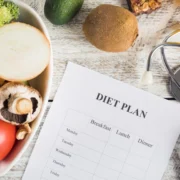



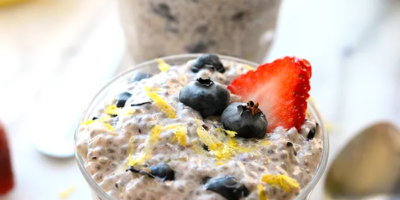
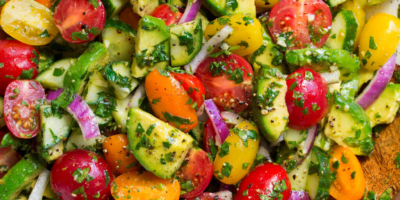
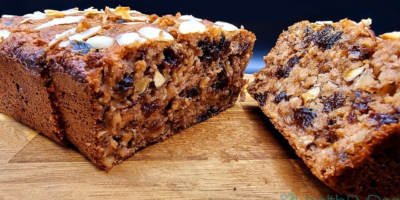


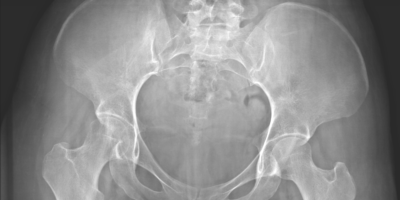




Comments